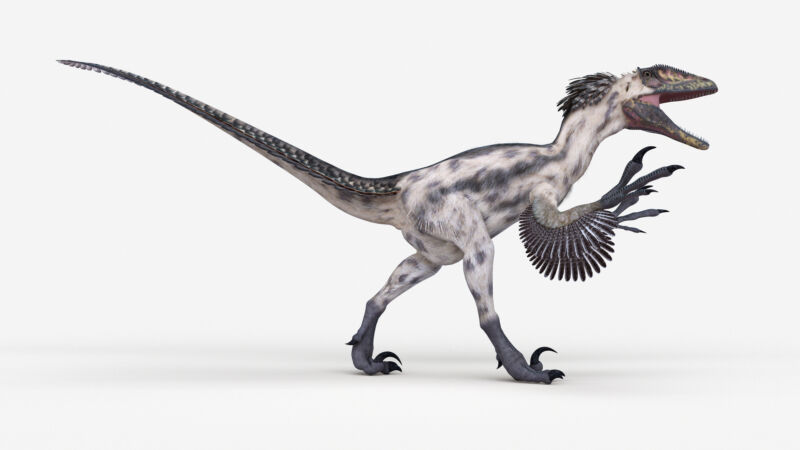Dinosaurs needed to be cold enough that being warm-blooded mattered

Enlarge / Later theropods had multiple adaptations to varied temperatures. (credit: SCIEPRO/SCIENCE PHOTO LIBRARY)
Dinosaurs were once assumed to have been ectothermic, or cold-blooded, an idea that makes sense given that they were reptiles. While scientists had previously discovered evidence of dinosaur species that were warm-blooded, though what could have triggered this adaptation remained unknown. A team of researchers now think that dinosaurs that already had some cold tolerance evolved endothermy, or warm-bloodedness, to adapt when they migrated to regions with cooler temperatures. They also think they’ve found a possible reason for the trek.
Using the Mesozoic fossil record, evolutionary trees, climate models, and geography, plus factoring in a drastic climate change event that caused global warming, the team found that theropods (predators and bird ancestors such as velociraptor and T. rex) and ornithischians (such as triceratops and stegosaurus) must have made their way to colder regions during the Early Jurassic. Lower temperatures are thought to have selected for species that were partly adapted to endothermy.
“The early invasion of cool niches… [suggests] an early attainment of homeothermic (possibly endothermic) physiology in [certain species], enabling them to colonize and persist in even extreme latitudes since the Early Jurassic,” the researchers said in a study recently published in Current Biology.